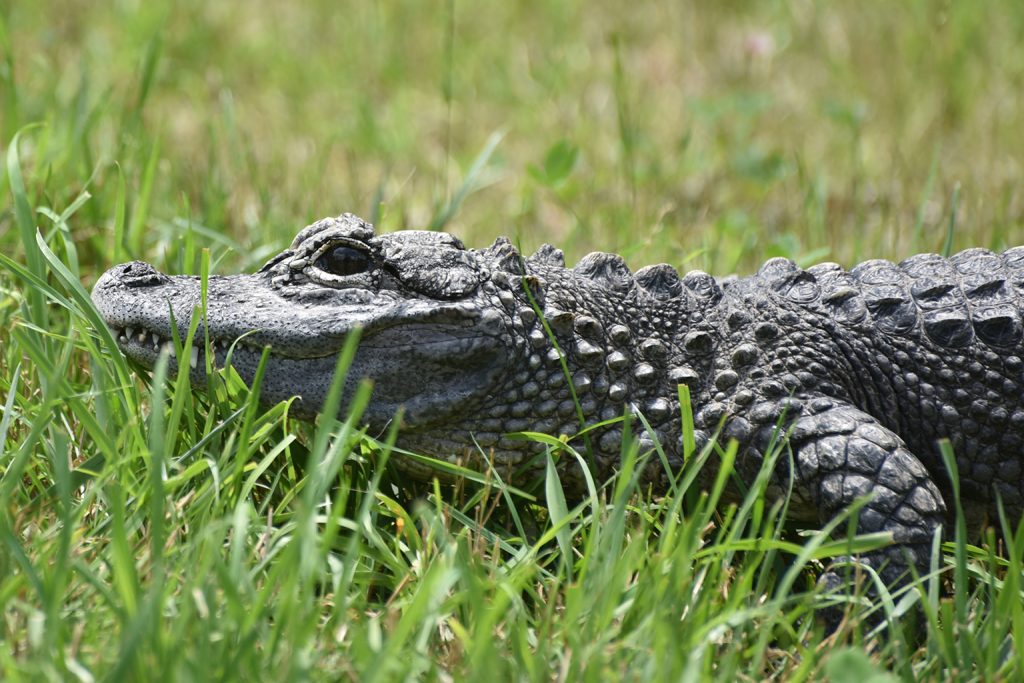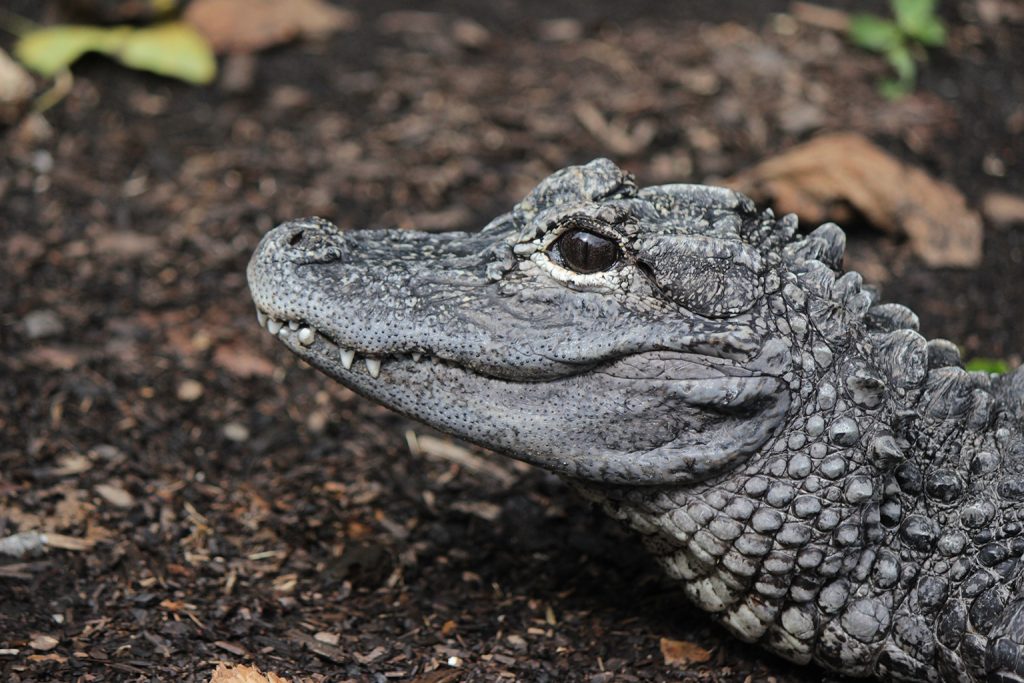Overview
“Where I live”
Chinese alligators are an extremely rare species now found only in a small area of protected reserve along the lower Yangtze River in the Anhui province of China. They were once widely distributed in eastern China throughout the entire Yangtze watershed. The species is adapted to inhabit slow-moving rivers, swamps, and wetlands.
“How I live there”
These mysterious and little known crocodilians spend much of their time in underground burrows or in water and do most of their hunting at night. They hibernate from early fall until late spring in burrows that they dig into the banks of rivers or wetlands. They feed on mussels, snails, fish, and the occasional duck or rodent.
“Making my mark”
Alligators are about as ancient as they look. They belong to an order of reptiles – the crocodilians – that first appeared on the planet approximately 80 million years ago. Today, only 2 species of alligator remain: the Chinese and the American. Chinese alligators are much smaller and more docile than their American relatives.
“What eats me”
The eggs and hatchlings of Chinese alligators are vulnerable to predation by other alligators, fish, and birds. Adults are threatened only by humans but this threat is significant. People have displaced Chinese alligators from most of their historic range. Encounters between people and alligators usually end badly for the alligators. Despite their protected status, local farmers have been known to kill them out of fear or frustration. Chinese alligators will prey on domestic ducks given the chance, and sometimes dig burrows into the banks of irrigation channels, causing them to collapse. Both habits upset farmers.
Raising Young
Chinese alligators mate during the rainy season, usually in the month of June. A few weeks later, females prepare mound nests and lay clutches of 10 to 40 eggs that they then cover with decaying vegetation. Females stay nearby guarding their nests while the eggs incubate. After about two months, as the eggs start to hatch, the watchful mothers may assist. When they hear vocalizations from within the eggs, they dig them out and sometimes help crack the shells. They then carry their tiny offspring in their mouths to water and leave them. New hatchlings are only a few inches long and weigh about one ounce. Chinese alligators continue to grow for the duration of their lives but grow most rapidly during the first five years.
Conservation
Chinese alligators are listed as critically endangered by the IUCN, the world’s leading conservation organization. The Crocodile Specialist Group of the IUCN cites less than 150 surviving in the wild. However, Chinese alligators are being bred successfully in captivity and efforts have begun to introduce captive-bred animals into protected reserves in China to restock the wild population. In China, these alligators are deemed a “first-class rare animal” and are legally protected. However, long-term conservation success depends on educating and convincing local residents to coexist peacefully with them.
Taxonomy
- Kingdom: Animalia
- Phylum: Chordata
- Subphylum: Vertebrata
- Class: Reptilia
- Genera: Alligator
- Species: sinensis
What is an Animal Ambassador?
The Maryland Zoo refers to its special collection of education program animals as “Animal Ambassadors.” The Zoo currently cares for more than 60 Animal Ambassadors, representing more than 40 species, both native and exotic. These animals are managed separately from the rest of the Zoo’s collection and cannot be seen on exhibit at the Zoo. However, many can be seen up close and personal on a rotating basis at Creature Encounters, the Zoo’s outdoor education center; at camp and school programs at the Zoo; as featured participants in community-based Outreach programs; and at special events on and off Zoo grounds.
Animal Ambassadors spend countless hours working with their human handlers, developing bonds of trust and communication that will allow them to appear in front of audiences large and small. They are not show animals. They behave naturally, focusing audiences’ attention on their natural behaviors and adaptations and giving living, breathing meaning to concepts and topics that students may be studying.
Animal Ambassadors travel all over the state of Maryland and beyond, and many also make local and national media appearances, educating about wildlife while representing the Zoo and its commitments to animal welfare and conservation.
What is The Animal Embassy?
The Animal Embassy at The Maryland Zoo is an off-exhibit area that is not open to the public. It is where the Zoo’s “Animal Ambassadors,” or education program animals, live. The Embassy is home to more than 60 individual animals representing more than 40 different species. It is staffed by its own dedicated group of keepers and volunteers and has both indoor and outdoor living space for the animals.


